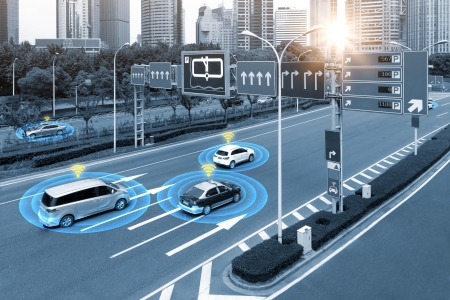Currently, partly self-driving vehicles that are commercially available are already driving on Dutch public roads. They can steer and keep a safe distance to vehicles in front. The driver does, however, have to monitor the situation continuously and intervene when necessary. This concerns the so-called Level 2 vehicles (see the question Which levels of driving automation can be distinguished?), of which Tesla’s Autopilot [5] is a well-known example.
In the Netherlands, new innovative and adaptive legislation has been adopted to enable large-scale pilots with self-driving vehicles on public roads. In 2015, legislation concerning exceptional transport (Boev [12] ) was extended and in 2019 the Experiment Act (2019 [13]) was introduced. The Netherlands Vehicle Authority has to grant the self-driving vehicle (temporary) exemption for a field trial. The exemption, which is a prerequisite for a self-driving vehicle to use public roads, can only be acquired after a test procedure. Exemption is granted for a specific trial and only applies to that trial. The appropriate exemption enables a field trial on public roads without the need for an actual driver to occupy the vehicle. Monitoring takes place from outside the vehicle. SWOV regularly advises on the human/behavioural aspects of pilots with self-driving vehicles on public roads [14]. The advice is taken into account when deciding on the exemption.
The Netherlands has been at the forefront in testing self-driving vehicles on public roads. Quite a few trials with self-driving vehicles have been carried out, are in progress, or have been planned; for example, the so-called last mile trials. During these trials, a self-driving minibus, or shuttle or people mover (see Figure 1 and the question How safe are self-driving shuttles/people movers?), drives a set and relatively short route between two locations, such as a public transport stop and a hospital (for example [15]).

Other countries are also working on allowing self-driving vehicles on public roads. The Declaration of Amsterdam [16]. is a first step towards a co-ordinated European approach. The declaration describes the joint targets and actions. This will prevent excessive variation of regulations and legislation within Europe, which would inhibit further development. In addition, there are worldwide partnerships that have, for instance, formalised co-operation between Europe, the United States and Japan [2].
